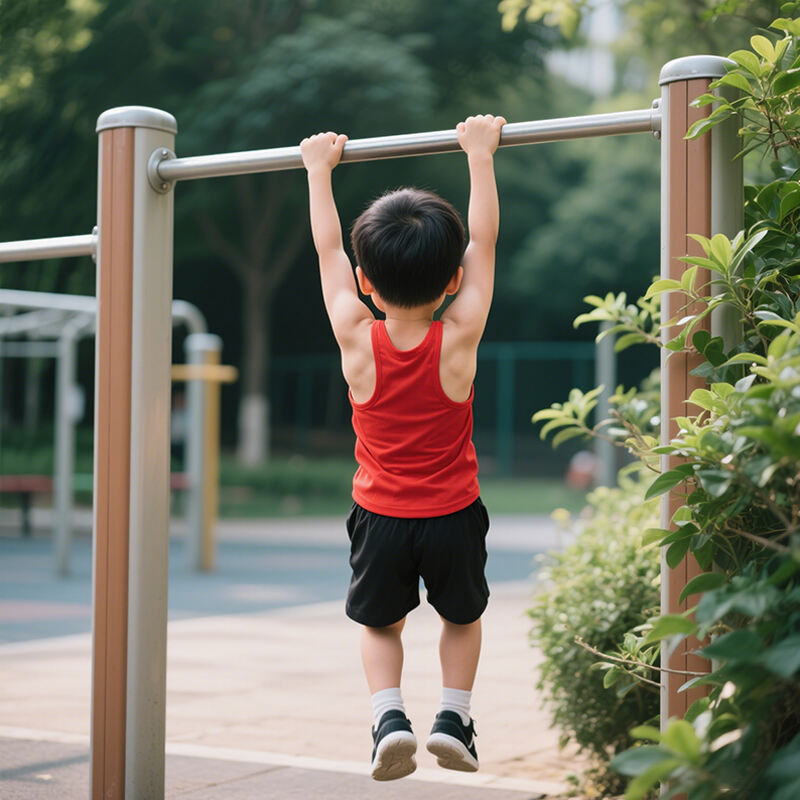Indoor gyms have evolved far beyond their traditional role as simple exercise spaces. These versatile environments now serve as powerful therapeutic tools, offering controlled settings for various forms of physical, occupational, and sensory therapy. The controlled climate and customizable nature of indoor gyms make them ideal locations for therapeutic interventions, allowing practitioners to create specific environments tailored to individual needs.
Modern indoor gyms integrate sophisticated equipment and adaptable spaces that cater to diverse therapeutic requirements. From specialized sensory rooms to modified exercise areas, these facilities provide safe, comfortable spaces where individuals can work on their physical and sensory development under professional guidance. The controlled environment eliminates weather-related concerns and external distractions, enabling focused therapeutic sessions year-round.
Indoor gyms provide consistent environmental conditions that help optimize therapeutic outcomes. The controlled lighting, temperature, and acoustic properties allow therapists to create ideal conditions for various therapeutic interventions. This consistency is particularly beneficial for individuals with sensory processing disorders or those recovering from neurological conditions.
Research has shown that controlled indoor environments can significantly impact neural plasticity - the brain's ability to form new connections and pathways. When therapy sessions are conducted in well-designed indoor gyms, participants can focus better on their exercises and sensory integration activities, leading to more effective therapeutic outcomes.
Indoor gyms offer specialized equipment and spaces that facilitate motor learning and physical adaptation. The controlled environment allows for precise movement patterns and repetitive exercises crucial for developing new motor skills. Therapists can easily modify the difficulty level and progression of exercises, ensuring optimal challenge levels for each individual.
The ability to customize equipment setups and create specific movement patterns makes indoor gyms particularly effective for rehabilitation purposes. Whether working on balance, coordination, or strength, the indoor setting provides the necessary tools and space for structured therapeutic progression.
Modern indoor gyms can be equipped with various sensory elements, including textured surfaces, light panels, sound systems, and specialized equipment. These features allow therapists to create comprehensive sensory experiences that can be carefully controlled and modified according to individual needs. The ability to adjust sensory input helps individuals learn to process and respond to different stimuli in a safe, supported environment.
Sensory rooms within indoor gyms often incorporate elements such as bubble tubes, fiber optic lights, and tactile panels. These features provide controlled sensory experiences that can be particularly beneficial for individuals with autism, sensory processing disorders, or other neurological conditions requiring specific sensory intervention.
Indoor gyms enable the implementation of structured sensory challenge programs. Therapists can systematically introduce various sensory experiences, gradually increasing complexity as individuals develop better processing abilities. This controlled progression is essential for building sensory resilience and improving adaptive responses to different stimuli.
The ability to create specific sensory zones within indoor gyms allows for targeted intervention strategies. Practitioners can design activities that address particular sensory needs while maintaining a safe and supportive environment for skill development.
Indoor gyms can be equipped with a wide range of therapeutic tools and equipment. From suspension systems and climbing walls to balance beams and sensory swings, these facilities offer various options for different therapeutic approaches. The equipment can be arranged and modified to create specific therapeutic circuits or activity zones.
Advanced indoor gyms often feature adjustable equipment that can accommodate individuals of different sizes and abilities. This adaptability ensures that therapeutic interventions can be precisely tailored to meet individual needs and goals, maximizing the effectiveness of each session.
The layout of indoor gyms can be strategically designed to support different therapeutic activities. Separate zones can be created for various types of interventions, allowing multiple therapy sessions to occur simultaneously while maintaining appropriate spacing and privacy. This organizational approach helps optimize the use of available space while ensuring effective therapeutic delivery.
Careful consideration of traffic flow and activity transitions within indoor gyms helps create smooth, efficient therapy sessions. The ability to modify space arrangements allows facilities to adapt to changing therapeutic needs and accommodate different types of interventions effectively.
Indoor gyms provide controlled environments where safety measures can be consistently maintained. Proper padding, appropriate lighting, and clean air circulation systems ensure a safe space for therapeutic activities. Regular maintenance and sanitization protocols help maintain a hygienic environment suitable for therapy sessions.
The controlled setting of indoor gyms allows for immediate adjustment of environmental conditions when needed. This adaptability is particularly important when working with individuals who have specific sensory sensitivities or medical conditions requiring careful environmental management.

Modern indoor gyms incorporate various accessibility features to accommodate individuals with different abilities. Wide doorways, smooth transitions between spaces, and adapted equipment ensure that therapy sessions are accessible to all participants. The indoor setting allows for permanent installation of necessary support structures and adaptive equipment.
Thoughtful design considerations in indoor gyms help create inclusive environments where individuals of all abilities can participate in therapeutic activities. These adaptations support the delivery of effective therapy while maintaining dignity and independence for all participants.
Indoor gyms can accommodate various therapeutic interventions, including physical therapy, occupational therapy, sensory integration therapy, and motor skills development. The versatile nature of these spaces allows for both individual and group therapy sessions, making them suitable for diverse therapeutic needs.
Indoor gyms can be customized through equipment selection, space organization, lighting adjustments, and the installation of specialized therapeutic features. Modifications can include adding sensory elements, creating quiet zones, installing adaptive equipment, and implementing various safety measures to meet specific therapeutic requirements.
Indoor gyms offer controlled environments where sensory experiences can be carefully managed and modified. They provide consistent conditions for therapy, protection from weather-related disruptions, and the ability to create specific sensory zones. This controlled setting allows for progressive sensory training programs tailored to individual needs and comfort levels.
 Hot News
Hot News2025-11-03
2025-11-11
2025-11-19
2025-10-30
2025-10-30
2025-10-30